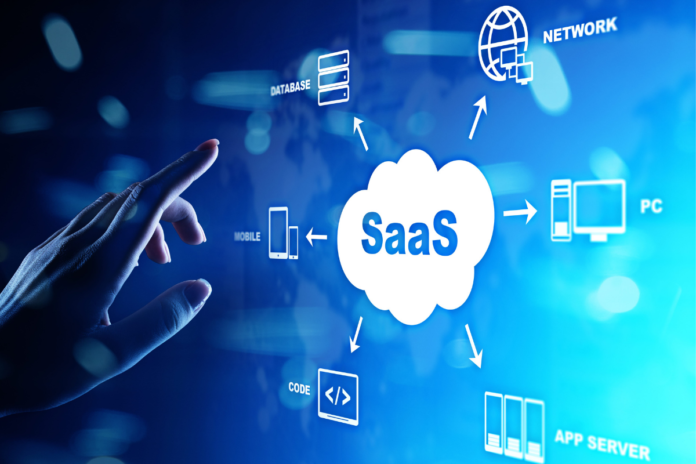In the ever-evolving landscape of software development, SaaS (Software as a Service) continues to be at the forefront, revolutionizing the way businesses operate and users engage with technology. As we step into 2024, the demand for innovative and user-centric SaaS applications is higher than ever. Whether you’re a seasoned developer or a newcomer to the field, this comprehensive guide will walk you through the essential steps and best practices to build a top-notch SaaS app in 2024. Whether you’re a freelancer, part of a tech startup, or working within a SaaS App Development company, this guide will equip you with the knowledge and tools needed to thrive in this dynamic industry.
Understanding the SaaS Landscape
Before diving into development, it’s crucial to grasp the current trends and dynamics of the SaaS industry. Analyze successful SaaS products, study market demands, and identify gaps that your app can fill. Stay updated with emerging technologies like AI, blockchain, and edge computing, as they can add significant value to your SaaS offering.
2. Defining Your SaaS Product
Clearly define your SaaS product’s purpose, target audience, and unique value proposition. Conduct thorough market research to validate your idea and ensure its viability. Draft a detailed project scope outlining features, functionalities, and user experience requirements. Consider scalability, security, and compliance from the outset to accommodate future growth and regulatory standards.
3. Choosing the Right Technology Stack
Selecting the appropriate technology stack is critical for the success of your SaaS app. Evaluate different programming languages, frameworks, and databases based on your project’s specific needs and long-term goals. Opt for scalable, reliable, and secure technologies that enable rapid development and seamless integration of new features.
4. Designing an Intuitive User Experience
User experience (UX) plays a pivotal role in the adoption and retention of SaaS applications. Prioritize simplicity, clarity, and efficiency in your app’s design to enhance usability and drive user engagement. Leverage user feedback, usability testing, and iterative design processes to refine and optimize the user interface continuously.
5. Implementing Robust Security Measures
Security is paramount in SaaS development, given the sensitive data often handled by cloud-based applications. Incorporate robust encryption, authentication, and access control mechanisms to safeguard user information and prevent unauthorized access or data breaches. Stay vigilant against evolving security threats and adhere to industry best practices and compliance standards.
6. Building Scalable Infrastructure
Scalability is essential for accommodating growing user bases and increasing workloads without compromising performance or reliability. Design a scalable infrastructure architecture leveraging cloud services, containerization, and microservices architecture. Implement auto-scaling mechanisms to dynamically adjust resource allocation based on demand fluctuations and optimize cost-efficiency.
7. Leveraging Data Analytics and Insights
Harness the power of data analytics to derive actionable insights and drive informed decision-making. Integrate analytics tools and frameworks into your SaaS app to track user behavior, measure performance metrics, and identify trends. Empower users with customizable reporting and data visualization capabilities to gain valuable insights into their operations and make data-driven decisions.
8. Continuous Integration and Deployment (CI/CD)
Adopt CI/CD practices to streamline development workflows, accelerate time-to-market, and ensure code quality and reliability. Automate build, test, and deployment processes using CI/CD pipelines, version control systems, and container orchestration platforms. Embrace agile methodologies and iterative development cycles to iterate rapidly and respond to changing market demands effectively.
9. Providing Exceptional Customer Support
Deliver exceptional customer support to cultivate long-term relationships and foster customer loyalty. Establish multiple communication channels for user inquiries, feedback, and support requests, such as email, and helpdesk systems. Prioritize responsiveness, professionalism, and empathy in addressing customer issues and resolving them promptly to enhance user satisfaction and retention.
10. Monitoring and Optimization
Monitor the performance, availability, and reliability of your SaaS app continuously to identify potential issues and proactively address them. Implement comprehensive monitoring tools and alerting systems to detect anomalies, troubleshoot errors, and optimize performance. Leverage performance testing and optimization techniques to fine-tune resource utilization, latency, and enhance overall user experience.
Conclusion
Building an excellent SaaS app in 2024 requires a combination of technical expertise, strategic planning, and a user-centric approach. By understanding the SaaS landscape, defining your product vision, leveraging the right technologies, and prioritizing user experience and security, you can develop a compelling SaaS offering that meets the needs of modern businesses and delights users. Embrace continuous innovation, feedback-driven iteration, and a commitment to excellence to stay ahead in the competitive SaaS market landscape. Partnering with RichestSoft, the best app development company, can further amplify your capabilities and ensure your app’s success.

